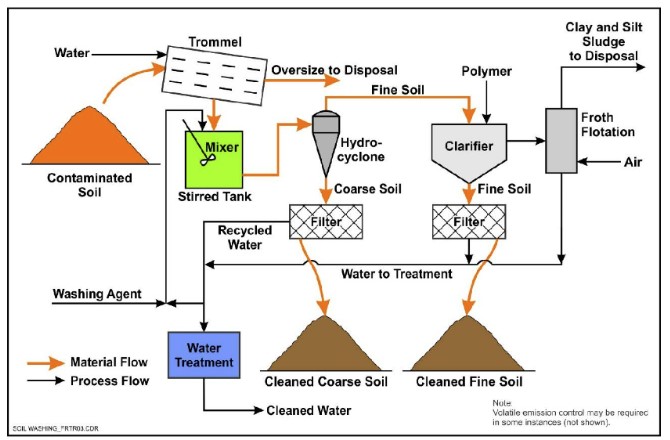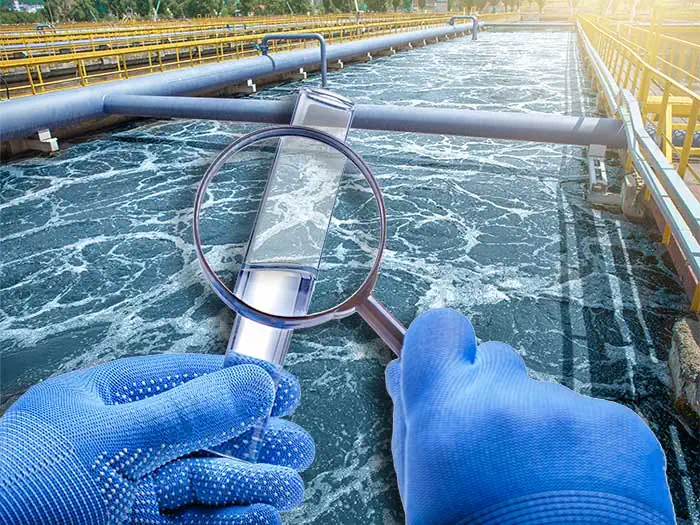The Challenges of M270 Waste Management for Environmental Cleanup
Wiki Article
How PFAS Therapy Ensures Clean and Sustainable Water
The existence of PFAS, commonly called "for life chemicals," postures substantial obstacles to water high quality and public health. Advanced treatment technologies, including triggered carbon adsorption and membrane filtering, have actually become effective options to alleviate these impurities. By employing these methods, communities can not only achieve cleaner water however also foster sustainable techniques that secure environments. The ramifications of these therapies expand beyond prompt health and wellness benefits; they elevate critical concerns regarding long-term water management techniques that need to be addressed to ensure a resilient future. What does this mean for our approach to water sustainability?
Comprehending PFAS Contamination
PFAS, or per- and polyfluoroalkyl materials, have actually become a significant ecological problem because of their prevalent prevalence and persistence in the setting. These synthetic chemicals have actually been made use of in different industrial applications and consumer items, consisting of non-stick cooking equipment, water resistant clothing, and food product packaging, as a result of their unique buildings such as water and grease resistance.The contamination of soil and water resources by PFAS happens mostly with industrial discharges, firefighting foam usage, and leaching from landfills. pfas management. Once launched, these materials are immune to deterioration, resulting in their accumulation in the environment. This persistence elevates critical problems, as PFAS can take a trip lengthy ranges with groundwater and surface water systems, influencing alcohol consumption water materials and communities

Health Risks of PFAS
The determination of PFAS in the setting elevates significant health worries for individuals revealed to these compounds. Study has connected PFAS exposure to numerous unfavorable wellness results, consisting of immune system disorder, liver damage, and raised danger of particular cancers.The universality of PFAS in consumer products, such as non-stick cookware, water-repellent materials, and food product packaging, further intensifies the risk of direct exposure. Drinking water polluted with PFAS is a significant issue, as these chemicals can seep into groundwater sources. At risk populations, including youngsters and those living near industrial sites, might encounter heightened dangers as a result of their developing systems and prospective for greater direct exposure levels.
As understanding of these health and wellness threats continues to grow, regulative firms are starting to establish guidelines for PFAS levels in alcohol consumption water. Public wellness initiatives are vital to mitigate direct exposure and shield areas from the lasting results of these hazardous substances.

Ingenious Therapy Technologies
Exactly pfas management how can we properly deal with the obstacles positioned by PFAS contamination in water resources? Innovative therapy modern technologies are becoming critical services in the pursuit for clean water. These techniques concentrate on the removal or damage of per- and polyfluoroalkyl materials (PFAS), which are notorious for their determination in the setting.One promising technique is adsorption making use of advanced materials, such as turned on carbon and ion exchange materials. These materials have revealed efficiency in capturing PFAS molecules from water. An additional significant technology is membrane filtering, which makes use of nanofiltration and turn around osmosis to separate contaminants at the molecular level, therefore giving an obstacle against PFAS.
Additionally, advanced oxidation processes (AOPs) utilize solid oxidants to damage down PFAS compounds right into safe results. This method is specifically effective for dealing with highly contaminated water sources. Bioremediation methods, utilizing certain microbes, are additionally being discovered to weaken PFAS.
As research continues, crossbreed systems that combine multiple modern technologies might provide enhanced performance, dealing with the complexities of PFAS contamination. The development and application of these ingenious treatment modern technologies are important actions towards making sure the safety and security and sustainability of our water sources.
Benefits of Efficient PFAS Treatment
Properly treating PFAS contamination in water sources substantially improves public health and environmental safety. PFAS, frequently described as "permanently chemicals," are resistant to deterioration and can build up in the body, causing serious wellness threats such as cancer, liver damage, and immune system disorder. By implementing efficient treatment approaches, neighborhoods can minimize exposure to these harmful materials, eventually improving the wellness results of their populations.
In addition, effective PFAS therapy contributes to the preservation of regional communities. Infected water can adversely influence marine life and disrupt the delicate equilibrium of regional habitats. By ensuring clean water, therapy procedures secure biodiversity and maintain environmental honesty.
Additionally, efficient PFAS removal can foster public self-confidence in water quality. When neighborhoods are ensured that their alcohol consumption water is without harmful contaminants, it promotes a feeling of safety and security and well-being. This count on is necessary for area engagement and support for ongoing water administration efforts.
Future of Water Sustainability
In the middle of expanding concerns concerning water quality and shortage, the future of water sustainability hinges on cutting-edge approaches and collaborative efforts. As neighborhoods deal with the looming dangers of pollutants like PFAS, the advancement of innovative therapy modern technologies is crucial. These modern technologies not just concentrate on the elimination of unsafe materials however likewise promote the reuse and recycling of water, thus minimizing general demand.Furthermore, effective water governance plays an essential role in guaranteeing sustainable techniques. Policymakers have to incorporate scientific research with regulatory structures to develop clear guidelines for water usage and therapy. Stakeholder involvement, including local communities and sectors, promotes a sense of common obligation and motivates sustainable techniques across various sectors.
Financial investment in facilities is also critical; updating aging systems to integrate modern purification and purification methods can significantly boost water high quality. Embracing environment-friendly innovations, such as all-natural filtering systems, can provide environment-friendly solutions.
Inevitably, the future of water sustainability lies in an all natural method that incorporates technology, plan, and community participation. By prioritizing these aspects, we can guard our water resources for generations ahead, guaranteeing clean and lasting water for all.
Final Thought
To conclude, the effective therapy of PFAS is essential for making sure tidy and sustainable water. By utilizing innovative technologies such as triggered carbon adsorption, membrane layer filtration, and advanced oxidation procedures, areas can considerably minimize the health risks related to these impurities. The assimilation of these therapy approaches supports community security and improves biodiversity. Inevitably, durable PFAS therapy strategies add to long-term strength in water monitoring, fostering public count on water quality and advertising lasting practices.Report this wiki page